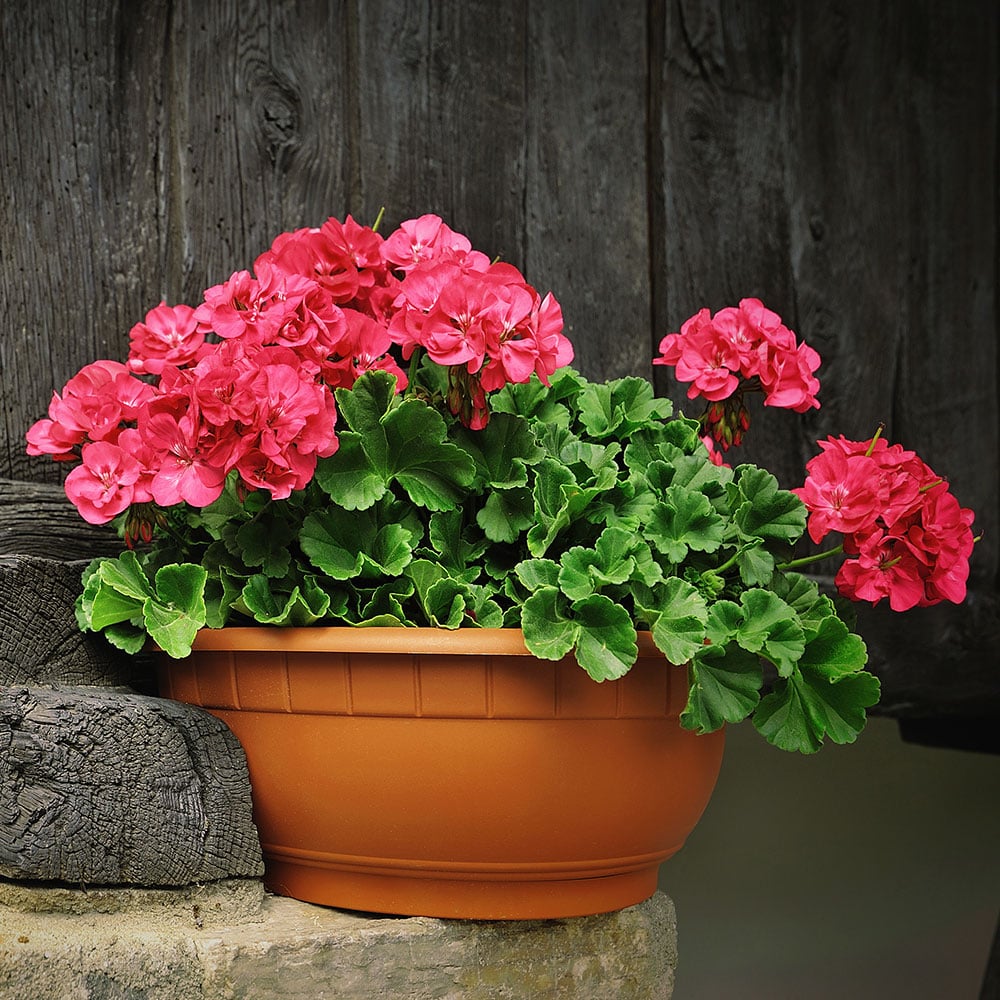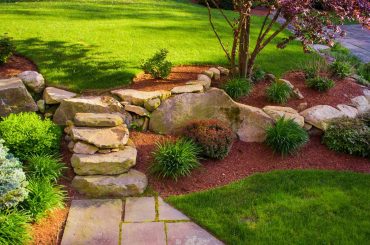Table of Contents
Are you a fan of colourful and vibrant flowers with distinct fragrances? All you need is a splash of Geranium in your garden!
But choosing the right Geranium is the important part, as there are many types of Geraniums. Each plant has different growing needs with respect to watering, care and maintenance. The process doesn’t just end with finding the right plant; pruning is the most important gardening task to keep your Geraniums healthy and happy.
In this blog, we will take you through the importance of pruning and the techniques that will help both Hardy & Tender Geraniums. So keep those pruning shears ready to help your Geraniums look vibrant!
About the Geraniums Plant
Cranesbills, also known as Geraniums, are genus flowering plants belonging to the family of Geraniaceae, which has over 400 species distributed across the continents and ecosystems. Geraniums have a very fascinating history which dates back to the 16th Century. First discovered in South Africa, it quickly gained popularity as an ornamental floral plant in England in 1631, and a few more species were developed in the early 17th Century. Towards the mid-1800s, these plants marked their presence in America and Australia.
Geraniums were initially grown from stem cutting and are passed over from generation to generation. Not until the 1900s did geranium propagation through seeds start, and these plants’ commercial growth spread. Geraniums are famous for beautiful flowers and cultural integration in European countries, and the Swiss have declared them their national flower.
Geranium is not only a decorative plant with aromatic leaves and dark green foliage but also has many medicinal values and healing properties. The roots of certain species are used to treat the digestive system, and the scented geranium oil is used to treat depression and stress. The essential oils in geranium leaves act as a great natural insect repellent.
Let’s shed some light on true geraniums that can be classified into Hardy & Tender Geraniums. Though these belong to the same family of Geraniaceae, there is a wide difference in bloom, size and shape.
1. Hardy Geranium
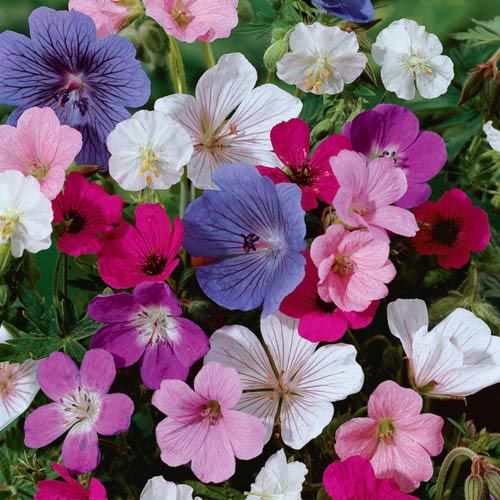
Hardy Geraniums, commonly known as Cranesbills, are perennial low-growing flowering plants that burst with colourful flowers and rich green foliage. These hardy geraniums are incredibly easy to grow and resistant to heat and droughts.
Hardy Geraniums bloom profusely from spring to late fall and do well as garden borders and ground covers.
They thrive in sunny conditions and well-drained, moist soil. They are pest and disease resistant, which produces elegant flowers with very less attention.
2. Tender Geraniums
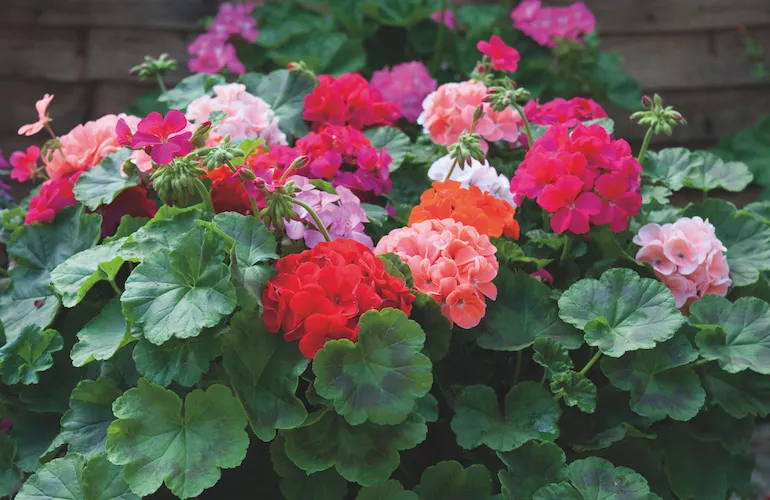
Pelargoniums, also known as Tender Geraniums, are compact and bushy perennials with vibrant flowers and lush, fragrant foliage. Compared to other species of Geraniums, these are considered tender in nature.
These are grown as annuals in colder temperatures or overwintered indoors. They need at least 6 hours of direct sunlight daily and can survive in well-drained soil. If chosen to grow in containers or indoors, the potting mixture should be equipped with organic matter.
Some species are susceptible to aphids and spider mites. To prevent diseases, allow air circulation around the roots and plants, also avoid overhead watering.
How to Prune Geraniums (Tender & Hardy)
Pruning is a gardening activity that promotes the overall health of the plant. It is the process of removing dead leaves and diseased leaves, shaping the plant for a beautiful appearance and encouraging healthy growth of stems and new bloom. Every plant has different maintenance and caring needs. Similarly, the pruning needs are also different for different plants.
Geraniums are one of those plants that greatly benefit from pruning—the most important technique to maintain the shape of the plant and encourage blooming.
1. Pruning Hardy Geraniums
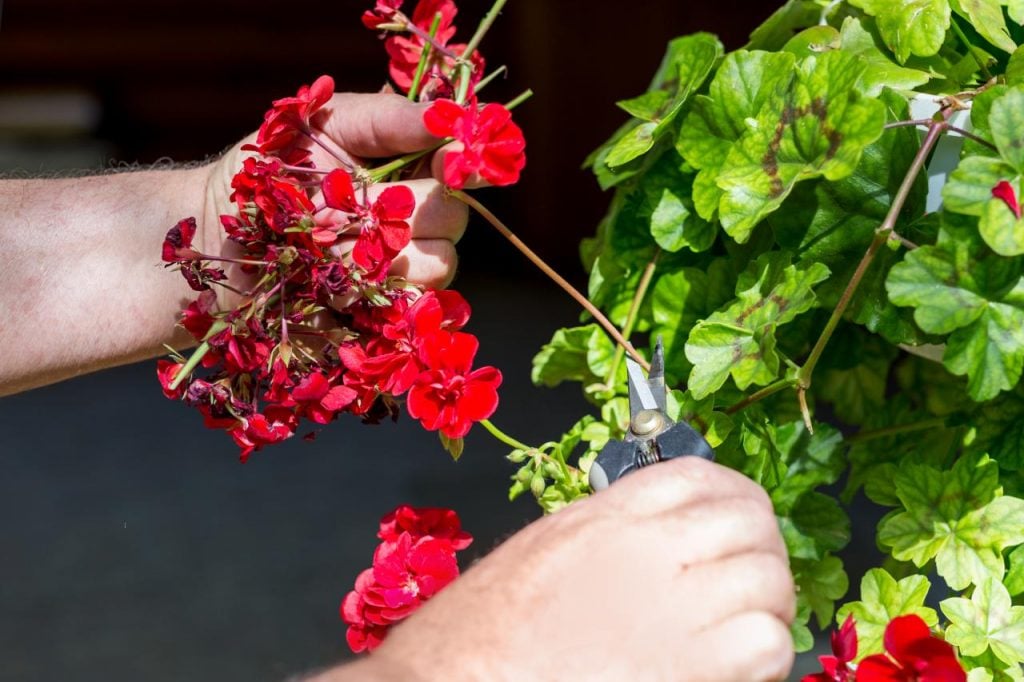
Once established, Hardy Geraniums need very less maintenance. To help your geranium look healthy and beautiful, it is advised to shear around mid-summer or after the blooming period, especially after the flowers start to fade. Cut back the stems to a few inches above the ground which helps the plants conserve energy for the next blooming period.
The perfect time to prune cranesbills in the UK is in spring which is around March. But the time depends on the type of species. Do not prune the plant too early, which can damage the plant and stunt the bloom.
To prune hardy geraniums, use a pair of pruning shears; start by removing dead, damaged and diseased leaves. Make a clean cut just above the base of the new growth. If the plant is old or has overgrown stems, do not hesitate to cut back the entire plant by one-third of the height.
Do not forget to water the plant frequently and apply fertilizers to promote new growth. It is recommended to mulch with organic matter or pebbles to retain moisture and suppress weed growth.
Deadheading Hardy Geraniums
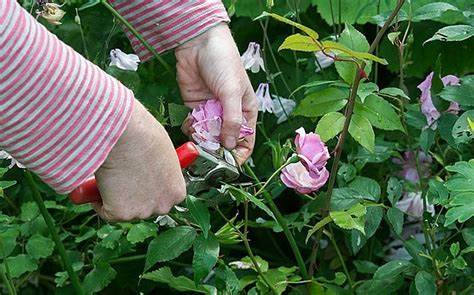
Deadheading is the process of removing old and wilt flowers to encourage new bloom.
Follow the following step to deadhead hardy geraniums.
- Observe the plant for spent flowers, the flowers that look brown and wilted.
- Take a pair of scissors or use fingers to pinch off the dead flowers, or use clean pruning shears to cut the stem right above a set of leaves.
- Repeat the same process throughout the growing season and blooming season to make space for new blooms. This will also prong the blooming period.
Hardy Geraniums grow really quickly; within a few weeks, new leaves will grow back.
2. Pruning Tender Geraniums
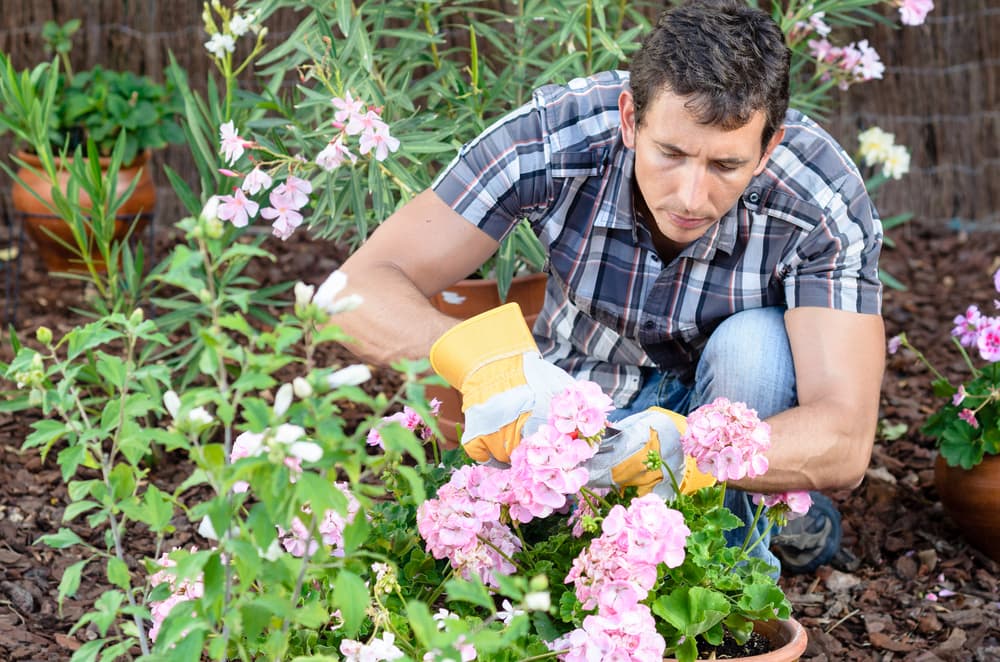
Tender Geraniums produce vibrant and colourful flowers all season long if maintained properly.
- Examine the plants for dead and diseased leaves and remove them. Dead leaves and flowers can attract pests which will stunt the plant’s growth.
- Tender Geraniums grow annually in colder temperatures; prune the plant before winter. Cut back the stems to just above the lowest set of leaves.
- If you prefer bushier and compact growth, pinch off the stems to encourage new growth. To make the perfect angular cut use the pruning shears.
- If the plant becomes leggy with thin stems and fewer leaves, cut back the stems to encourage fuller growth or cut back the stem just above the healthy leaf.
Deadheading Tender Geraniums
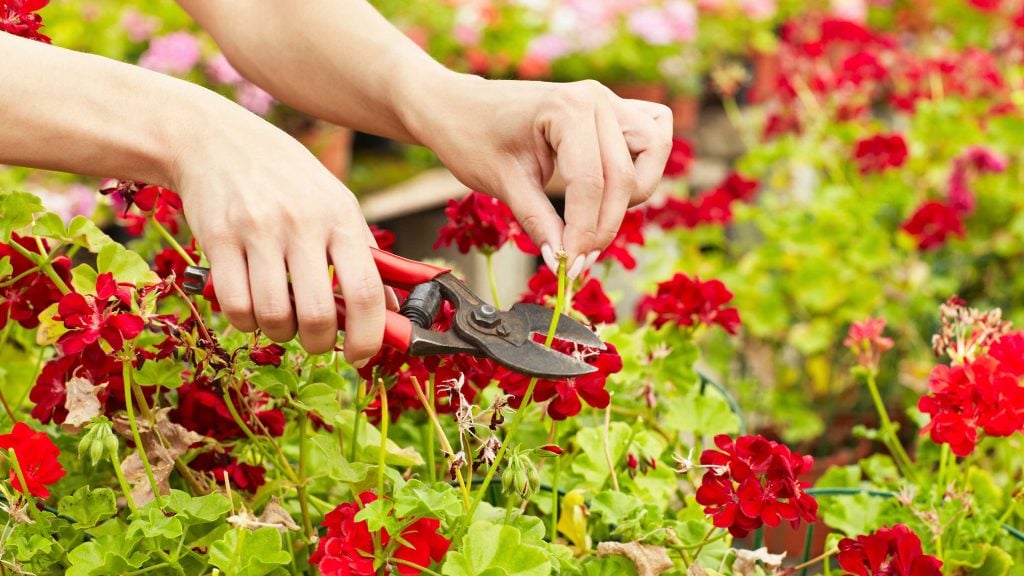
Tender Geraniums also need deadheading to promote fresh and colourful bloom.
- Remove spent flowers that are turned brown to encourage new bloom.
- If you notice seed growth, remove that too, this encourages the plant to focus the energy on new bloom rather than producing seeds.
Pruning Hardy Vs Tender Geraniums
The pruning needs of both hardy and tender geraniums are similar. Both benefit equally from pruning and deadheading; both plant species can become leggy and require little pruning to maintain the shape and size of the plant. Since tender geraniums cannot tolerate colder temperatures, they should be pruned after flowering or in winter. Hardy geraniums can withstand any conditions. They can be pruned in spring and in summer after the blooming period.
Using the Right Pruning Techniques
Now that we have seen the importance of pruning the plants before holding those pruning shears know the right way to do it. Using the right pruning is crucial to maintain the health and appearance of the plant. Here are some general tips that will help you prune better.
- Identifying the right tools – Use sharp and clean tools, dull and dirty pruning shears might make the plants susceptible to diseases. So, make sure your tools are clean before setting them on the plant.
- Identify the nature of the plant– Different plants have different pruning needs, and different plants need pruning in different seasons. Some plants are resistant to pruning, while other plants need to be pruned heavily.
- Identify the growth habit– Some plants produce bloom on newly grown stems, and some plants produce colour on old stems and bare branches. It is important to understand the growing habit of the plant. This will help you understand where to make the cut.
- Remove Dead and diseased parts – It is important to monitor the plant regularly for dead and diseased leaves. Spent flowers and wilted and leggy stems make the plant lazy and stunt new growth. To prevent the disease’s spread and eliminate pests, remove the infected parts.
- Cutting at the right- angle – Make sure you cut at a 45 degrees angle to prevent water from pooling on the surface of the cut. This will also improve the healing process.
- Identify the pruning needs– Over- Pruning can weaken the plant and stunt the blooming and new growth of leaves. Make sure you are removing only what is needed to be removed to maintain the appearance and overall health of the plant.
Conclusion
Hardy or Tender Geraniums add a vibrant and versatile touch to your garden or indoor space. All the beautiful colours and fragrances and lush foliage don’t last long if not maintained and taken care of properly.
Every plant needs a little pruning to promote healthy growth, profuse blooming and lush foliage. As discussed, pruning is a very important and crucial part of gardening to shape the appearance of the plant.
When pruning hardy or tender geraniums, this blog will help you find the right techniques to avoid damage and promote healthy growth. Once you understand the nature of your Geranium, the process gets easy; with a little bit of knowledge and practice, you will be able to create a vibrant and beautiful space.
Grab your pruning shears, and do not be afraid to try these techniques. But be careful and gentle while you are at it!

